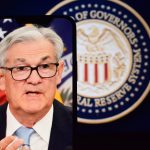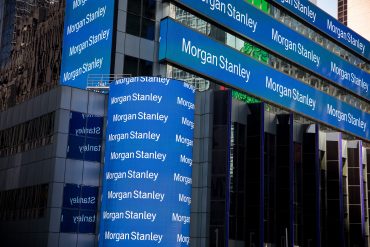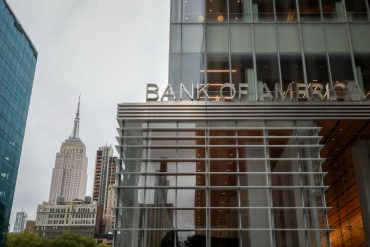

Investment firms shift portfolios toward defensive assets as economic indicators signal approaching market slowdown in 2025
Key Takeaways
- Vanguard warns of weaker stock performance over the next six months, advising long-term investors to increase fixed income exposure as growth slows and the Federal Reserve prepares potential rate cuts
- BlackRock recommends barbell investment strategy using buffer ETFs like MAXJ, which offers up to 7% S&P 500 exposure with downside protection as cash-heavy investors return to equity markets
- Both firms expand beyond traditional markets with Vanguard upgrading 90% of its platform to cloud-native technology and BlackRock acquiring $7.3 billion in private assets through Elmtree Funds purchase
Introduction
According to the CNBC, major asset managers are preparing investors for a period of economic deceleration and market volatility in the second half of 2025. Vanguard and BlackRock, two of the world’s largest investment firms, are advocating for strategic portfolio adjustments as growth prospects dim and inflation pressures mount.
The firms’ latest guidance centers on defensive positioning through increased fixed income allocations and specialized equity strategies. This shift reflects growing concerns about labor market cooling and the Federal Reserve’s likely policy response to mounting economic pressures.
Key Developments
Vanguard’s Roger Hallam, the firm’s global head of rates, signals a fundamental shift in market conditions during a recent CNBC appearance. He anticipates gradual labor market cooling alongside rising inflation, creating conditions that will force the Federal Reserve to prioritize employment over price stability.
“Our outlook for the second half of this year is that growth will slow,” Hallam explains, predicting eventual rate cuts to provide economic support. This environment creates favorable conditions for bonds, prompting Vanguard to launch three new U.S. government bond ETFs this week, including the Vanguard Government Securities Active ETF.
BlackRock’s Jay Jacobs, the firm’s U.S. head of equity ETFs, advocates for a barbell approach combining defensive and growth-oriented positions. He expects significant cash flows to gradually return to equity markets despite elevated risks, creating opportunities for structured products that offer downside protection.
The iShares Large Cap Max Buffer Jun ETF exemplifies this strategy, providing up to 7% S&P 500 exposure with built-in downside protection. The fund recently reset its parameters and has gained 5% this year, tracking the iShares Core S&P 500 ETF performance.
Market Impact
The investment management industry shows clear signs of structural change, with mutual funds experiencing outflows while ETFs and alternative investments attract increasing capital. This shift reflects evolving investor preferences for more liquid and cost-effective investment vehicles.
Buffer ETFs gain particular traction in the current environment, offering investors equity exposure with defined risk parameters. BlackRock’s MAXJ fund demonstrates this appeal, providing capped upside potential while limiting downside losses during market turbulence.
Fixed income markets stand to benefit from the anticipated policy pivot, with Vanguard positioning its new government bond ETFs to capture potential rate-driven rallies. The firm emphasizes securities with strong credit profiles to navigate economic uncertainty effectively.
Strategic Insights
Both firms identify infrastructure and artificial intelligence as dominant macro themes driving long-term investment opportunities. These sectors offer exposure to structural economic changes while providing potential inflation hedges through real asset exposure and technological advancement.
Vanguard increases allocations to defensive sectors including consumer staples and healthcare, recognizing their resilience during economic slowdowns. The firm simultaneously advocates for value stock tilts and diversified portfolios to weather various economic scenarios.
BlackRock’s expansion into private markets through its $7.3 billion Elmtree Funds acquisition signals growing emphasis on alternative investments. This move diversifies revenue streams while providing clients access to real estate and other private assets traditionally unavailable through public markets.
The loss of traditional macro anchors like stable inflation targets and fiscal discipline creates new challenges for portfolio construction. Both firms adapt by emphasizing thematic investing and dynamic allocation strategies rather than static long-term positioning.
Expert Opinions and Data
Hallam emphasizes the importance of fixed income positioning, stating: “We think that will provide a tailwind for bonds. So, we’re confident in the outlook for fixed income, and we think clients should be allocating to fixed income.”
Jacobs focuses on selective equity opportunities, explaining: “As we continue to see geopolitics and fragmentation around the world impact markets, I think people are going to be looking at really powerful macro trends like the growth of infrastructure in the United States as a way to place their bets in the equity markets.”
Technology modernization plays a crucial role in both firms’ strategies, with Vanguard completing a cloud-native upgrade covering 90% of its personal investor platform. This infrastructure enhancement enables faster innovation and improved user experiences through AI integration.
Analysts note that generative AI transitions from experimental phases to practical deployment across client engagement and portfolio management functions. Firms leading in AI adoption position themselves for substantial competitive advantages through differentiated product offerings.
Conclusion
Vanguard and BlackRock position themselves for a challenging economic environment through defensive portfolio strategies, technology modernization, and alternative investment expansion. Their emphasis on fixed income exposure, buffer ETFs, and macro-themed investing reflects adaptation to a period of elevated uncertainty and structural economic change.
The firms’ strategic pivots toward private markets, AI integration, and infrastructure investments demonstrate recognition that traditional investment approaches require substantial modification. These adjustments aim to cushion volatility while capturing long-term growth opportunities in an evolving macro regime that demands proactive management and strategic flexibility.








